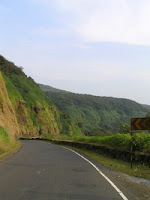 Amboli is a hill station in south Maharashtra, India. At an altitude of 690 meters it is the last hill station before the coastal highlands of Goa and a relatively unexplored one. Amboli lies in the Sahayadri Hills of Western India, one of the world’s “Eco Hot-Spots” and it therefore abounds in a variety of fairly unique flora and fauna. However, as in the other parts of the Sahaydri Hills, denudation of the forest cover and unregulated government assisted “development” (read “hotels, resorts & highways”) are gradually ruining a once pristine environment. Historically, Amboli village came into being as one of the staging posts along the road from Vengurla port to the city of Belgaum, which was extensively used by the British to supply their garrisons in south and central India. The hills of Amboli village provide one of the sources of the Krishna river (The “Ganges” of south India) and an ancient Shiva temple (called Hiranyakeshi) exists at the cave where the water emerges. The main attraction for tourists is the incredibly high rainfall (7 meters average per year!)and the numerous waterfalls and mist during the monsoons. Legend has it that there are 108 Shiva temples in and around Amboli of which only a dozen have been uncovered, one as recently as 2005. There aren’t too many places to see or things to do but its quiet, unpolluted and the local residents are good natured and helpful. Continue reading Amboli Amboli is a hill station in south Maharashtra, India. At an altitude of 690 meters it is the last hill station before the coastal highlands of Goa and a relatively unexplored one. Amboli lies in the Sahayadri Hills of Western India, one of the world’s “Eco Hot-Spots” and it therefore abounds in a variety of fairly unique flora and fauna. However, as in the other parts of the Sahaydri Hills, denudation of the forest cover and unregulated government assisted “development” (read “hotels, resorts & highways”) are gradually ruining a once pristine environment. Historically, Amboli village came into being as one of the staging posts along the road from Vengurla port to the city of Belgaum, which was extensively used by the British to supply their garrisons in south and central India. The hills of Amboli village provide one of the sources of the Krishna river (The “Ganges” of south India) and an ancient Shiva temple (called Hiranyakeshi) exists at the cave where the water emerges. The main attraction for tourists is the incredibly high rainfall (7 meters average per year!)and the numerous waterfalls and mist during the monsoons. Legend has it that there are 108 Shiva temples in and around Amboli of which only a dozen have been uncovered, one as recently as 2005. There aren’t too many places to see or things to do but its quiet, unpolluted and the local residents are good natured and helpful. Continue reading Amboli
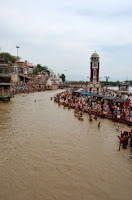 Haridwar (हरिद्वार), also spelled Hardwar, is a city in the state of Uttarakhand. Haridwar, literally Gateway to God, is one of the Hindu holy places in India and a center of Hindu religion and mysticism for centuries. Located on the banks of River Ganges (Ganga), at the point where the Ganges descends from the hills to the North Indian plains, Haridwar attracts a large number of Hindu pilgrims from all over the world. Continue reading Haridwar – Gateway to God Haridwar (हरिद्वार), also spelled Hardwar, is a city in the state of Uttarakhand. Haridwar, literally Gateway to God, is one of the Hindu holy places in India and a center of Hindu religion and mysticism for centuries. Located on the banks of River Ganges (Ganga), at the point where the Ganges descends from the hills to the North Indian plains, Haridwar attracts a large number of Hindu pilgrims from all over the world. Continue reading Haridwar – Gateway to God
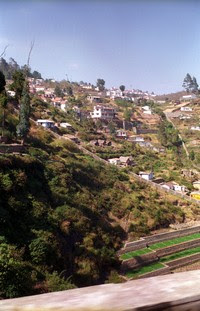 Kodaikanal (Tamil: கோடைக்கானல்) is a city in the hills of the taluk division of the Dindigul district in the state of Tamil Nadu, India. Kodaikanal is referred to as the “Princess of Hill stations” and has a long history as a retreat and popular tourist destination. It’s a lot cooler in temperature than lower elevation cities such as Chennai. Kodaikanal was established in 1845 as a refuge from the high temperatures and Kodaikanal (Tamil: கோடைக்கானல்) is a city in the hills of the taluk division of the Dindigul district in the state of Tamil Nadu, India. Kodaikanal is referred to as the “Princess of Hill stations” and has a long history as a retreat and popular tourist destination. It’s a lot cooler in temperature than lower elevation cities such as Chennai. Kodaikanal was established in 1845 as a refuge from the high temperatures and
tropical diseases of the plains. Much of the local economy is based on the hospitality industry serving tourism. The Kurinji Flower is in full bloom around December once in 12 years, and it bathes the valley in a beautiful sea of blue. Its because of this the hills are known as Nilgiris (Nil means Blue and Giri means Hill). It was last in full bloom in 2006; its next bloom is expected in 2018. Kodaikanal is also sometimes referred to as “Princess of Hill stations.” Continue reading Kodaikanal
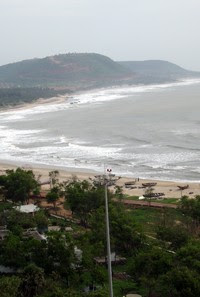 Vizag is sometimes referred to as the “Goa of the east coast.” Just like its west coast counterpart, it has beautiful virgin beaches, reddish laterite hillocks, smooth roads and stunning landscape. Health-tourism is a fast developing industry. Visakhapatnam is variously referred to as Jewel on the Coramandel Coast, Steel city, and the City of Destiny. The local population is basically Telugu. There is considerable concentration of Marwaris, Oriya, Bengalis, Punjabis, Tamil and Malayalees. In addition, there is a large population of migrant workers from other parts of India who have been drawn to the area by the abundance of work at locally based companies, such as Eastern Naval Command, Vizag Steel Plant and Hindustan Shipyard. Vizag is sometimes referred to as the “Goa of the east coast.” Just like its west coast counterpart, it has beautiful virgin beaches, reddish laterite hillocks, smooth roads and stunning landscape. Health-tourism is a fast developing industry. Visakhapatnam is variously referred to as Jewel on the Coramandel Coast, Steel city, and the City of Destiny. The local population is basically Telugu. There is considerable concentration of Marwaris, Oriya, Bengalis, Punjabis, Tamil and Malayalees. In addition, there is a large population of migrant workers from other parts of India who have been drawn to the area by the abundance of work at locally based companies, such as Eastern Naval Command, Vizag Steel Plant and Hindustan Shipyard.
Continue reading Vizag Beach
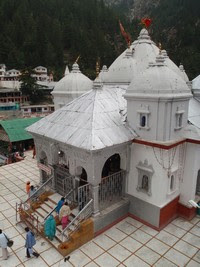 Gangotri (Hindi: गंगोत्री) is a town and a Nagar Panchayat in Uttarkashi district in the state of Uttarakhand, India. It is a Hindu pilgrim town on the banks of the river Bhagirathi. It is on the Greater Himalayan Range, at a height of 3,042 m. The picturesque pilgrimage in the hinterlands of the Himalayas is the most sacred spot where Ganga , the stream of life, touched earth for the first time.According to mythology, Goddess Ganga – the daughter of heaven, manifested herself in the form of a river to absolve the sins of King Bhagirath’s predecessors, following his severe penance of several centuries. Lord Shiva received her into his matted locks to minimise the immense impact of her fall. She came to be called Bhagirathi at her legendary source. Continue reading Gangotri – Char Dham Gangotri (Hindi: गंगोत्री) is a town and a Nagar Panchayat in Uttarkashi district in the state of Uttarakhand, India. It is a Hindu pilgrim town on the banks of the river Bhagirathi. It is on the Greater Himalayan Range, at a height of 3,042 m. The picturesque pilgrimage in the hinterlands of the Himalayas is the most sacred spot where Ganga , the stream of life, touched earth for the first time.According to mythology, Goddess Ganga – the daughter of heaven, manifested herself in the form of a river to absolve the sins of King Bhagirath’s predecessors, following his severe penance of several centuries. Lord Shiva received her into his matted locks to minimise the immense impact of her fall. She came to be called Bhagirathi at her legendary source. Continue reading Gangotri – Char Dham
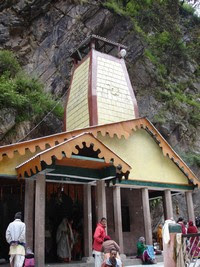 The Yamunotri temple is located in Uttarakhand, India, a full day’s journey from Uttaranchal’s main towns — Rishikesh, Haridwar or Dehradun. The actual temple is only accessible by a thirteen kilometer walk from the town of Hanuman Chatti and a six kilometer walk from Janki Chatti; horses or palanquins are available for rent. The hike from Hanuman Chatti to Yamunotri is very picturesque with beautiful views of a number of waterfalls. The original temple was built by Maharani Gularia of Jaipur in the 19th century. The current temple is of recent origin as past iterations have been destroyed by the weather and elements. Lodging at the temple itself is limited to a few small ashrams and guest-houses. Ritual duties such as the making and distribution of prasad (sanctified offerings) and the supervision of pujas (ritual venerations) are performed by the Uniyal family of pujaris (priests). Unique aspects of ritual practice at the site include hot springs where raw rice is cooked and made into prasad. It is located at an altitude of 3,235 metres approximately. A little ahead is the actual source of the river Yamuna which is at an altitude of about 4,421 metres approximately. Hot springs are also present offering relief to tired hikers. The Yamunotri temple is located in Uttarakhand, India, a full day’s journey from Uttaranchal’s main towns — Rishikesh, Haridwar or Dehradun. The actual temple is only accessible by a thirteen kilometer walk from the town of Hanuman Chatti and a six kilometer walk from Janki Chatti; horses or palanquins are available for rent. The hike from Hanuman Chatti to Yamunotri is very picturesque with beautiful views of a number of waterfalls. The original temple was built by Maharani Gularia of Jaipur in the 19th century. The current temple is of recent origin as past iterations have been destroyed by the weather and elements. Lodging at the temple itself is limited to a few small ashrams and guest-houses. Ritual duties such as the making and distribution of prasad (sanctified offerings) and the supervision of pujas (ritual venerations) are performed by the Uniyal family of pujaris (priests). Unique aspects of ritual practice at the site include hot springs where raw rice is cooked and made into prasad. It is located at an altitude of 3,235 metres approximately. A little ahead is the actual source of the river Yamuna which is at an altitude of about 4,421 metres approximately. Hot springs are also present offering relief to tired hikers.
There seems to be a confusion about who built the temple of Yamunotri. According to the website [uttarkashi.nic.in/Yamunotri.htm], the temple was originally constructed by Maharaj Pratap Shah of Tehri Garhwal. Continue reading Yamunotri – Char Dham
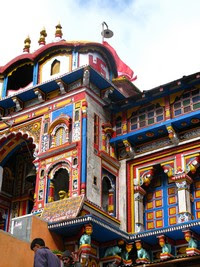 Badrinath is a Hindu holy town and a nagar panchayat in Chamoli district in the state of Uttarakhand, India. Badrinath is the most important of the four sites in India’s Char Dham pilgrimage. Badrinath is in the Garhwal hills, on the banks of the Alaknanda River, at an elevation of 3133 m. Continue reading Badrinath – Char Dham Badrinath is a Hindu holy town and a nagar panchayat in Chamoli district in the state of Uttarakhand, India. Badrinath is the most important of the four sites in India’s Char Dham pilgrimage. Badrinath is in the Garhwal hills, on the banks of the Alaknanda River, at an elevation of 3133 m. Continue reading Badrinath – Char Dham
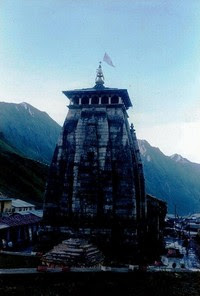 Kedarnath (Hindi: केदारनाथ) is a Hindu holy town located in the Indian state of Uttarakhand. It is a nagar panchayat in Rudraprayag district. The most remote of the four Char Dham sites, Kedarnath is located in the Himalayas, about 3584m above sea level near the head of river Mandakini, and is flanked by breathtaking snow-capped peaks. Kedarnath hosts one of the holiest Hindu temples, the Kedarnath Temple, and is a popular destination for Hindu pilgrims from all over the world, being one of the four major sites in India’s Char Dham pilgrimage. Kedarnath (Hindi: केदारनाथ) is a Hindu holy town located in the Indian state of Uttarakhand. It is a nagar panchayat in Rudraprayag district. The most remote of the four Char Dham sites, Kedarnath is located in the Himalayas, about 3584m above sea level near the head of river Mandakini, and is flanked by breathtaking snow-capped peaks. Kedarnath hosts one of the holiest Hindu temples, the Kedarnath Temple, and is a popular destination for Hindu pilgrims from all over the world, being one of the four major sites in India’s Char Dham pilgrimage.
Kedarnath is named after King Kedar who ruled in the Satya Yuga. He ruled the seven continents and was a very saintly king. He had a daughter named Vrinda who was a partial incarnation of Goddess Lakshmi. She performed austerities for 60000 years. Because of her, the land is named Vrindavan. Continue reading Kedarnath – Char Dham
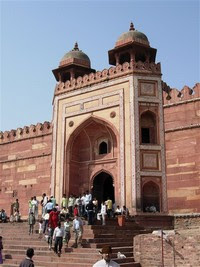 Fatehpur Sikri (Hindi: फतेहपूर सिकरी, Urdu: فتحپور سیکری) is a city and a municipal board in Agra district in the state of Uttar Pradesh, India. The historical city was constructed by Mughal emperor Akbar beginning in 1570 and served as the empire’s capital from 1571 until 1585, when it was abandoned for reasons that remain unclear. The surviving palace and mosque are a tourist attraction and a UNESCO World Heritage Site. Continue reading Fatehpur Sikri Fatehpur Sikri (Hindi: फतेहपूर सिकरी, Urdu: فتحپور سیکری) is a city and a municipal board in Agra district in the state of Uttar Pradesh, India. The historical city was constructed by Mughal emperor Akbar beginning in 1570 and served as the empire’s capital from 1571 until 1585, when it was abandoned for reasons that remain unclear. The surviving palace and mosque are a tourist attraction and a UNESCO World Heritage Site. Continue reading Fatehpur Sikri
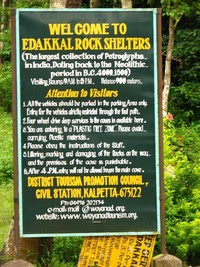 Edakkal Caves are two natural caves located 1000 metres high on Ambukutty Mala 25 km from Kalpetta in the Wayanad district of Kerala in India’s Western Ghats. They lie on an ancient trade route connecting the high mountains of Mysore to the Malabar coast ports. Inside the caves are pictorical writings believed to be from neolithic man, evidence of the presence of a prehistoric civilisation existing in this region. Such stone age carvings are very rare and these are the only known examples in southern India. Continue reading Edakkal Caves Edakkal Caves are two natural caves located 1000 metres high on Ambukutty Mala 25 km from Kalpetta in the Wayanad district of Kerala in India’s Western Ghats. They lie on an ancient trade route connecting the high mountains of Mysore to the Malabar coast ports. Inside the caves are pictorical writings believed to be from neolithic man, evidence of the presence of a prehistoric civilisation existing in this region. Such stone age carvings are very rare and these are the only known examples in southern India. Continue reading Edakkal Caves
|
|
 Amboli is a hill station in south Maharashtra, India. At an altitude of 690 meters it is the last hill station before the coastal highlands of Goa and a relatively unexplored one. Amboli lies in the Sahayadri Hills of Western India, one of the world’s “Eco Hot-Spots” and it therefore abounds in a variety of fairly unique flora and fauna. However, as in the other parts of the Sahaydri Hills, denudation of the forest cover and unregulated government assisted “development” (read “hotels, resorts & highways”) are gradually ruining a once pristine environment. Historically, Amboli village came into being as one of the staging posts along the road from Vengurla port to the city of Belgaum, which was extensively used by the British to supply their garrisons in south and central India. The hills of Amboli village provide one of the sources of the Krishna river (The “Ganges” of south India) and an ancient Shiva temple (called Hiranyakeshi) exists at the cave where the water emerges. The main attraction for tourists is the incredibly high rainfall (7 meters average per year!)and the numerous waterfalls and mist during the monsoons. Legend has it that there are 108 Shiva temples in and around Amboli of which only a dozen have been uncovered, one as recently as 2005. There aren’t too many places to see or things to do but its quiet, unpolluted and the local residents are good natured and helpful. Continue reading Amboli
Amboli is a hill station in south Maharashtra, India. At an altitude of 690 meters it is the last hill station before the coastal highlands of Goa and a relatively unexplored one. Amboli lies in the Sahayadri Hills of Western India, one of the world’s “Eco Hot-Spots” and it therefore abounds in a variety of fairly unique flora and fauna. However, as in the other parts of the Sahaydri Hills, denudation of the forest cover and unregulated government assisted “development” (read “hotels, resorts & highways”) are gradually ruining a once pristine environment. Historically, Amboli village came into being as one of the staging posts along the road from Vengurla port to the city of Belgaum, which was extensively used by the British to supply their garrisons in south and central India. The hills of Amboli village provide one of the sources of the Krishna river (The “Ganges” of south India) and an ancient Shiva temple (called Hiranyakeshi) exists at the cave where the water emerges. The main attraction for tourists is the incredibly high rainfall (7 meters average per year!)and the numerous waterfalls and mist during the monsoons. Legend has it that there are 108 Shiva temples in and around Amboli of which only a dozen have been uncovered, one as recently as 2005. There aren’t too many places to see or things to do but its quiet, unpolluted and the local residents are good natured and helpful. Continue reading Amboli
 Haridwar (हरिद्वार), also spelled Hardwar, is a city in the state of Uttarakhand. Haridwar, literally Gateway to God, is one of the Hindu holy places in India and a center of Hindu religion and mysticism for centuries. Located on the banks of River Ganges (Ganga), at the point where the Ganges descends from the hills to the North Indian plains, Haridwar attracts a large number of Hindu pilgrims from all over the world.
Haridwar (हरिद्वार), also spelled Hardwar, is a city in the state of Uttarakhand. Haridwar, literally Gateway to God, is one of the Hindu holy places in India and a center of Hindu religion and mysticism for centuries. Located on the banks of River Ganges (Ganga), at the point where the Ganges descends from the hills to the North Indian plains, Haridwar attracts a large number of Hindu pilgrims from all over the world.  Kodaikanal (Tamil: கோடைக்கானல்) is a city in the hills of the taluk division of the Dindigul district in the state of Tamil Nadu, India. Kodaikanal is referred to as the “Princess of Hill stations” and has a long history as a retreat and popular tourist destination. It’s a lot cooler in temperature than lower elevation cities such as Chennai. Kodaikanal was established in 1845 as a refuge from the high temperatures and
Kodaikanal (Tamil: கோடைக்கானல்) is a city in the hills of the taluk division of the Dindigul district in the state of Tamil Nadu, India. Kodaikanal is referred to as the “Princess of Hill stations” and has a long history as a retreat and popular tourist destination. It’s a lot cooler in temperature than lower elevation cities such as Chennai. Kodaikanal was established in 1845 as a refuge from the high temperatures and Vizag is sometimes referred to as the “Goa of the east coast.” Just like its west coast counterpart, it has beautiful virgin beaches, reddish laterite hillocks, smooth roads and stunning landscape. Health-tourism is a fast developing industry. Visakhapatnam is variously referred to as Jewel on the Coramandel Coast, Steel city, and the City of Destiny. The local population is basically Telugu. There is considerable concentration of Marwaris, Oriya, Bengalis, Punjabis, Tamil and Malayalees. In addition, there is a large population of migrant workers from other parts of India who have been drawn to the area by the abundance of work at locally based companies, such as Eastern Naval Command, Vizag Steel Plant and Hindustan Shipyard.
Vizag is sometimes referred to as the “Goa of the east coast.” Just like its west coast counterpart, it has beautiful virgin beaches, reddish laterite hillocks, smooth roads and stunning landscape. Health-tourism is a fast developing industry. Visakhapatnam is variously referred to as Jewel on the Coramandel Coast, Steel city, and the City of Destiny. The local population is basically Telugu. There is considerable concentration of Marwaris, Oriya, Bengalis, Punjabis, Tamil and Malayalees. In addition, there is a large population of migrant workers from other parts of India who have been drawn to the area by the abundance of work at locally based companies, such as Eastern Naval Command, Vizag Steel Plant and Hindustan Shipyard. Gangotri (Hindi: गंगोत्री) is a town and a Nagar Panchayat in Uttarkashi district in the state of Uttarakhand, India. It is a Hindu pilgrim town on the banks of the river Bhagirathi. It is on the Greater Himalayan Range, at a height of 3,042 m. The picturesque pilgrimage in the hinterlands of the Himalayas is the most sacred spot where Ganga , the stream of life, touched earth for the first time.According to mythology, Goddess Ganga – the daughter of heaven, manifested herself in the form of a river to absolve the sins of King Bhagirath’s predecessors, following his severe penance of several centuries. Lord Shiva received her into his matted locks to minimise the immense impact of her fall. She came to be called Bhagirathi at her legendary source.
Gangotri (Hindi: गंगोत्री) is a town and a Nagar Panchayat in Uttarkashi district in the state of Uttarakhand, India. It is a Hindu pilgrim town on the banks of the river Bhagirathi. It is on the Greater Himalayan Range, at a height of 3,042 m. The picturesque pilgrimage in the hinterlands of the Himalayas is the most sacred spot where Ganga , the stream of life, touched earth for the first time.According to mythology, Goddess Ganga – the daughter of heaven, manifested herself in the form of a river to absolve the sins of King Bhagirath’s predecessors, following his severe penance of several centuries. Lord Shiva received her into his matted locks to minimise the immense impact of her fall. She came to be called Bhagirathi at her legendary source.  The Yamunotri temple is located in Uttarakhand, India, a full day’s journey from Uttaranchal’s main towns — Rishikesh, Haridwar or Dehradun. The actual temple is only accessible by a thirteen kilometer walk from the town of Hanuman Chatti and a six kilometer walk from Janki Chatti; horses or palanquins are available for rent. The hike from Hanuman Chatti to Yamunotri is very picturesque with beautiful views of a number of waterfalls. The original temple was built by Maharani Gularia of Jaipur in the 19th century. The current temple is of recent origin as past iterations have been destroyed by the weather and elements. Lodging at the temple itself is limited to a few small ashrams and guest-houses. Ritual duties such as the making and distribution of prasad (sanctified offerings) and the supervision of pujas (ritual venerations) are performed by the Uniyal family of pujaris (priests). Unique aspects of ritual practice at the site include hot springs where raw rice is cooked and made into prasad. It is located at an altitude of 3,235 metres approximately. A little ahead is the actual source of the river Yamuna which is at an altitude of about 4,421 metres approximately. Hot springs are also present offering relief to tired hikers.
The Yamunotri temple is located in Uttarakhand, India, a full day’s journey from Uttaranchal’s main towns — Rishikesh, Haridwar or Dehradun. The actual temple is only accessible by a thirteen kilometer walk from the town of Hanuman Chatti and a six kilometer walk from Janki Chatti; horses or palanquins are available for rent. The hike from Hanuman Chatti to Yamunotri is very picturesque with beautiful views of a number of waterfalls. The original temple was built by Maharani Gularia of Jaipur in the 19th century. The current temple is of recent origin as past iterations have been destroyed by the weather and elements. Lodging at the temple itself is limited to a few small ashrams and guest-houses. Ritual duties such as the making and distribution of prasad (sanctified offerings) and the supervision of pujas (ritual venerations) are performed by the Uniyal family of pujaris (priests). Unique aspects of ritual practice at the site include hot springs where raw rice is cooked and made into prasad. It is located at an altitude of 3,235 metres approximately. A little ahead is the actual source of the river Yamuna which is at an altitude of about 4,421 metres approximately. Hot springs are also present offering relief to tired hikers. Badrinath is a Hindu holy town and a nagar panchayat in Chamoli district in the state of Uttarakhand, India. Badrinath is the most important of the four sites in India’s Char Dham pilgrimage. Badrinath is in the Garhwal hills, on the banks of the Alaknanda River, at an elevation of 3133 m.
Badrinath is a Hindu holy town and a nagar panchayat in Chamoli district in the state of Uttarakhand, India. Badrinath is the most important of the four sites in India’s Char Dham pilgrimage. Badrinath is in the Garhwal hills, on the banks of the Alaknanda River, at an elevation of 3133 m.  Kedarnath (Hindi: केदारनाथ) is a Hindu holy town located in the Indian state of Uttarakhand. It is a nagar panchayat in Rudraprayag district. The most remote of the four Char Dham sites, Kedarnath is located in the Himalayas, about 3584m above sea level near the head of river Mandakini, and is flanked by breathtaking snow-capped peaks. Kedarnath hosts one of the holiest Hindu temples, the Kedarnath Temple, and is a popular destination for Hindu pilgrims from all over the world, being one of the four major sites in India’s Char Dham pilgrimage.
Kedarnath (Hindi: केदारनाथ) is a Hindu holy town located in the Indian state of Uttarakhand. It is a nagar panchayat in Rudraprayag district. The most remote of the four Char Dham sites, Kedarnath is located in the Himalayas, about 3584m above sea level near the head of river Mandakini, and is flanked by breathtaking snow-capped peaks. Kedarnath hosts one of the holiest Hindu temples, the Kedarnath Temple, and is a popular destination for Hindu pilgrims from all over the world, being one of the four major sites in India’s Char Dham pilgrimage. Fatehpur Sikri (Hindi: फतेहपूर सिकरी, Urdu: فتحپور سیکری) is a city and a municipal board in Agra district in the state of Uttar Pradesh, India. The historical city was constructed by Mughal emperor Akbar beginning in 1570 and served as the empire’s capital from 1571 until 1585, when it was abandoned for reasons that remain unclear. The surviving palace and mosque are a tourist attraction and a UNESCO World Heritage Site.
Fatehpur Sikri (Hindi: फतेहपूर सिकरी, Urdu: فتحپور سیکری) is a city and a municipal board in Agra district in the state of Uttar Pradesh, India. The historical city was constructed by Mughal emperor Akbar beginning in 1570 and served as the empire’s capital from 1571 until 1585, when it was abandoned for reasons that remain unclear. The surviving palace and mosque are a tourist attraction and a UNESCO World Heritage Site.  Edakkal Caves are two natural caves located 1000 metres high on Ambukutty Mala 25 km from Kalpetta in the Wayanad district of Kerala in India’s Western Ghats. They lie on an ancient trade route connecting the high mountains of Mysore to the Malabar coast ports. Inside the caves are pictorical writings believed to be from neolithic man, evidence of the presence of a prehistoric civilisation existing in this region. Such stone age carvings are very rare and these are the only known examples in southern India.
Edakkal Caves are two natural caves located 1000 metres high on Ambukutty Mala 25 km from Kalpetta in the Wayanad district of Kerala in India’s Western Ghats. They lie on an ancient trade route connecting the high mountains of Mysore to the Malabar coast ports. Inside the caves are pictorical writings believed to be from neolithic man, evidence of the presence of a prehistoric civilisation existing in this region. Such stone age carvings are very rare and these are the only known examples in southern India.